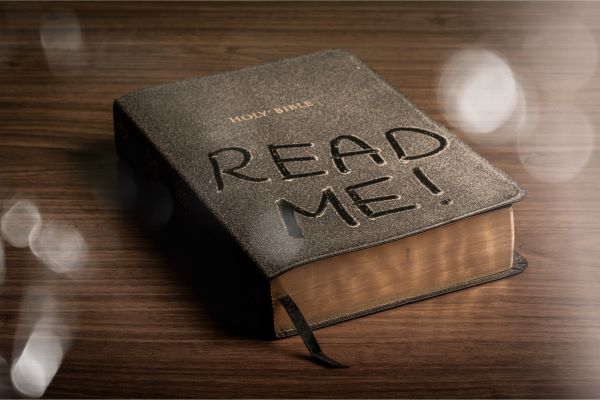How the Old Testament is Categorized
By Thomas Thorne
McDowell County
Christian scholars generally categorize the Old Testament into five parts. The Jewish sages categorize the Hebrew Bible (which is the writings of the Old Testament) into three parts. In my article today I want to describe the divisions used by Christians as well as the Jewish people.
At the beginning of an English Bible, before the text begins, there will be a table of contents, showing the names of the books included. Usually, it will be divided into two sections, the Old Testament and the New Testament. The first book in the Old Testament is Genesis and the last book is Malachi. There are a total of 39 books. Christian scholars have divided the Old Testament into five parts:
- The Pentateuch includes the books of Genesis through Deuteronomy. The word Pentateuch is formed by two Greek words, pente (five) and teuchos (books). The word means “five vessels,” “five containers,” or “five-volume book.” This is a total of 5 books.
- Historical books: Joshua through Esther – 12 books
- Poetic books: Job through the Song of Solomon – 5 books
- Major prophets: Isaiah through Daniel – 5 books
- Minor prophets: Hosea through Malachi – 12 books
The one “exception to the rule” is the book of Lamentations, which is included in the major prophets division and comes between Jeremiah and Ezekiel. Lamentations is not a major prophet, in the sense of the words used. It only has five chapters and is a poetic book. I believe that the reason Lamentations is included among the major prophets is because it was written by Jeremiah, it deals with his lamentation for the fall of Judah, and it may have been felt that Jeremiah’s writing/speaking should not have been sub-categorized.
The terms “major prophets” and “minor prophets” were mentioned above and must be clarified. The distinction between “major” and “minor” prophets has nothing to do with importance, but rather the size of the book. The major prophets (except for Lamentations) are generally larger books with more written content (for example, Isaiah has 66 chapters and Jeremiah has 51) whereas the minor prophets are shorter writings. Cases in point are Hosea, which has twelve chapters, Joel which has three, and Obadiah with only one. Indeed, smaller in length, but by no means lesser in importance.
Now let’s take a look at the division of the Hebrew Bible by the Jewish sages. The Hebrew Bible contains the 39 books that Christians recognize as the Old Testament. It is also known as the “Tanakh.” The word Tanakh is spelled with the three Hebrew letters: “tav,” “nun (pronounced as noon),” and “kaf.” Tav has the sound of a “t” in English, Nun sounds like an “n,” and Kaf sounds like a “k.” The three Hebrew letters of the word “Tanakh” can be used as abbreviations for the three categories of books included in the Hebrew Bible/Old Testament.
- The first Hebrew letter, Tav, with the “t” sound can be thought of as representing “Torah” (To-rah). This Hebrew word designates the first five books of the Bible and the word itself means law, instruction, or direction.
- The second Hebrew letter, Nun, with the “n” sound, stands for “Neviim (Nev-ee-eem). The word in Hebrew means “prophets.”
- The third letter, Kaf, with the “k” sound, represents “Ketuvim” (Ket-oo-veem). This word means “writings.”
The Jewish division of the Hebrew Bible (Old Testament) is as follows:
- The Torah (law, instruction, direction) consists of Genesis, Exodus, Leviticus, Numbers, and Deuteronomy (5 books)
- The Neviim – (Prophets) include Joshua, Judges, 1 & 2 Samuel, 1 & 2 Kings, Isaiah, Jeremiah, Ezekiel, Hosea, Joel, Amos, Obadiah, Jonah, Micah, Nahum, Habakkuk, Zephaniah, Haggai, Zechariah, Malachi (21 books)
- The Ketuvim – (Writings) is made up of Psalms, Proverbs, Job, Song of Solomon, Ruth, Lamentations, Ecclesiastes, Esther, Daniel, Ezra, Nehemiah, 1 and 2 Chronicles (13 books)
So let’s do a little math. The Torah/Law contains five books, the Neviim/Prophets contains 21, and 13 books make up the Ketuvim/Writings. 5 + 21 + 13 = 39. There are also 39 books in the English Old Testament.
Some questions remain though. Why are the books of 1 and 2 Samuel as well as 1 & 2 Kings called part of the “Prophets”? Aren’t they historical books that would be better classified as part of the “Writings?” Why is the book of Daniel considered part of the “Writings” instead of the “Prophets?” What, specifically, is meant by the phrase “prophet” or “to prophesy?” Are the books of the Bible in chronological order by either activity or time of writing? These are subjects for the next couple of articles.
Shalom Shalom,
Tom Thorne
____________________________________________
Tom Thorne and his wife (Amy) moved to Marion from Denver, NC almost a year and a half ago. Thomas and Amy are fellowship leaders of a small congregation of Believers called “Servants of the Most High God.” Tom can be reached at servantsotmhg@gmail.com
____________________________________________
Read more Christian news here.







